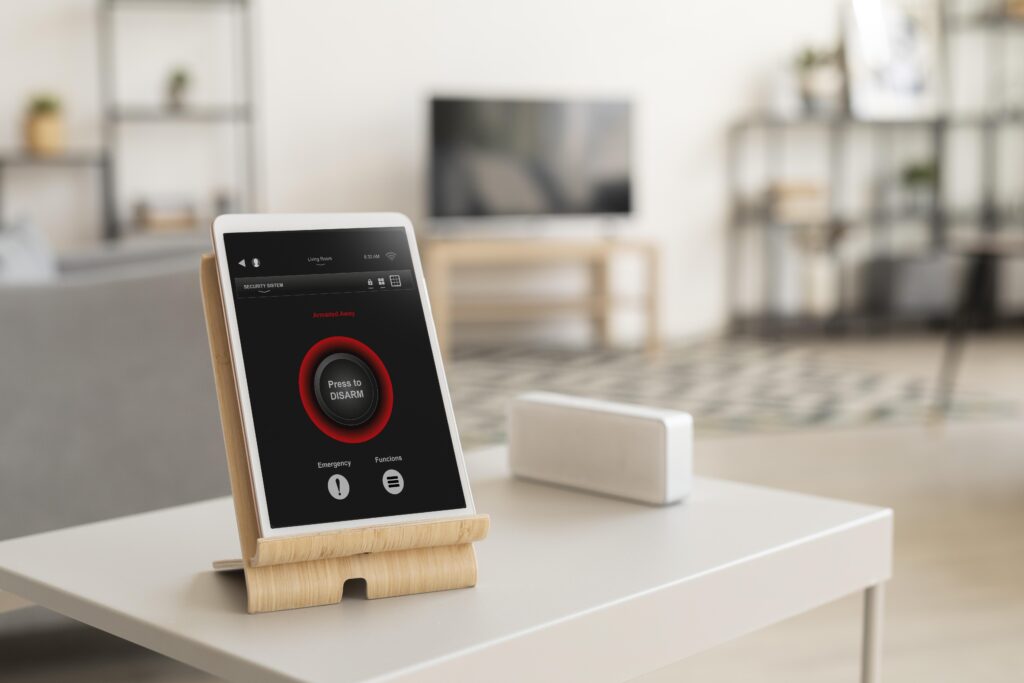What It Is & How It Works
Voice technology allows you to command devices or access information just by talking—no buttons or screens required. Here’s a quick explanation of how it works:
- First, your words are captured by a microphone.
- Next, the system removes background noise and amplifies your voice for clarity.
- Then Automatic Speech Recognition (ASR) translates your spoken words into text.
- That text is processed by Natural Language Processing (NLP) to determine what you actually meant.
- After it gets your intent, the system performs the action by using apps or device controls.
- Lastly, if necessary, it answers you back with Text-to-Speech (TTS)—translating the response back to spoken words.
This whole process drives digital assistants such as Alexa, Siri, and Google Assistant, smart home devices, and in-vehicle voice systems.
Main Use Cases & Where It’s Used
🏠 Smart Homes & Automation
You can control your house effortlessly through voice commands—turn lights on and off, adjust thermostat settings, lock doors, start appliances, or play music. These work smoothly with ecosystems such as Apple HomeKit, Google Home, and Matter.
🚗 Cars & In-Vehicle Features
In cars, voice technology enables you to keep your eyes on the road. You can request directions, make a phone call, play your music, or even have food ordered without lifting your hand. For instance, SoundHound AI demonstrated in-car voice ordering at CES 2025—just talk, and it happens.
☎️ Customer Service & Business Use
Voice bots are also doing customer support, appointment booking, and FAQ answers. The most sophisticated ones can even pick up on your emotional tone and adapt their responses, which makes interaction more natural and fulfilling.
♿ Accessibility & Healthcare
Voice tech is a game changer for individuals with disabilities. It provides hands-free assistance, speech-to-text for the hearing impaired, reminders, and for those with cognitive issues—aiding them in being able to live more independently.

Historical Milestones
- Butler in a Box (1983): A pioneering voice-controlled home automation prototype with light control, timer control, and calling through a wake word — hindered by high expense and memory volatility.
- DECtalk (1984): A pioneering speech synthesizer employed for accessibility and interactive applications.
- IBM ViaVoice (1997): desktop speech recognition bundle, eventually folded into Nuance’s Dragon line.
- Smart Speakers (2014+): Amazon Echo (2014, Alexa), Google Home (2016), and Apple HomePod (2018) popularized voice‑activated devices.
Contemporary Trends & Developments (2025)
Generative AI & Conversational Intelligence
Large language model (LLM)‑powered assistants now converse in natural, subtle, and bespoke ways. Amazon’s Alexa+ is constructed on the basis of generative AI to provide human‑like answers and cross‑service assistance.
Emotional & Sentiment Awareness
Latest voice systems are able to recognize stress, tone, or frustration and respond empathetically. This advancement enhances experiences in healthcare, customer care, and more.
Multilingual & Accent Support
AI assistants currently allow dozens of languages and regional dialects, mid-sentence language switching, and cultural responsiveness.
Voice Biometrics & Personalization
Voiceprints allow secure, personalized profiles for each user, which opens tailored playlists, calendar reminders, transactions, and authentication.
Voice Commerce
From voice-commerce-enabled shopping to payments and order tracking—all through verbal commands. Voice commerce is poised to go mainstream in 2025.
Edge Processing & Local Controls
Offline speech recognition (on-device keyword spotting) makes it possible for low-latency, energy-efficient, and privacy-aware voice execution in the home.
Sound Personalization & Adaptive Audio
Smart speakers automatically adjust volume and EQ based on environmental conditions, mic location, and user settings—for optimal listening comfort.
Integration with AR, IoT & Wearables
Voice assistants built into AR glasses, wearables, and IoT hubs support intuitive interactions such as “tell me about this place” through camera + voice pairing.

Benefits & Challenges
Benefits
- Hands-free convenience, safer driving, improved accessibility
- Personalized answers through voiceprint identification and learning of user preferences
- Inclusive and multilingual conversations, language barriers transcended
- Improved privacy management due to local processing and personalized data policies
Limitations
- Privacy threats: constant listening, data leaks, and accidental recordings need to be openly disclosed and strongly controlled by the user.
- Security threats: voice spoofing, adversarial attacks, and ML model vulnerabilities continue to pose challenges.
What’s Next? Future Directions
- Intrinsic wellness coaching: stress recognition and mental well-being assistance
- Real-time voice-to-voice translation between languages and environments
- Integration with work tooling: meeting minutes, email composition, workflow automation
- Extending into voice-enabled AR glasses & ambient speech interfaces
- Broader use of Matter standard for smart home interoperability
Voice Technology: A Brief Rundown
Voice tech has developed from mere spoken commands to profoundly intuitive systems that can chat, comprehend, and act—very much like an assistant human.
Key Elements
- Automatic Speech Recognition (ASR): Translates speech to text.
- Natural Language Processing (NLP): Deciphers meaning and intent.
- Text‑to‑Speech (TTS): Provides answers in natural-sounding synthetic voices.
- Voice Biometrics: Applies distinctive voice characteristics to secure, personalized access.
- Edge Computing: Facilitates on-device local processing for immediate response and improved privacy.
Where It’s Being Used
- Smart Homes: Voice control of lights, locks, appliances, thermostat, and more.
- Automotive: Touch-free navigation, media management, and in-car assistants.
- Business & Customer Support: Virtual agents managing bookings, queries, and call automation.
- Accessibility: Assists mobility or sensory-challenged individuals through speech input/output.
- Healthcare: Voice reminders, patient engagement, and recording medical information.

What’s New and Exciting
- Emotion AI: Tone and mood are now picked up by systems, with responses delivered empathetically .
- Generative Conversation: Beyond canned responses, new LLMs produce natural, seamless conversations .
- Voice Commerce: Voice shopping and payments are becoming the norm .
- Multimodal Interfaces: Merging voice with vision and gesture—perfect for smart devices and AR .
- Offline (Edge) Voice: Processing commands locally minimizes lag and keeps personal data safe .
Challenges Ahead
- Privacy Issues: Sensitive voice information is gathered by always-listening devices. Policies and opt-in/opt-out are lagging behind.
- Accuracy Problems: Dialect, accent, ambient noise, and various language use can mislead systems.
- Bias Threats: Training with non-representative data can result in discriminatory or biased responses.



